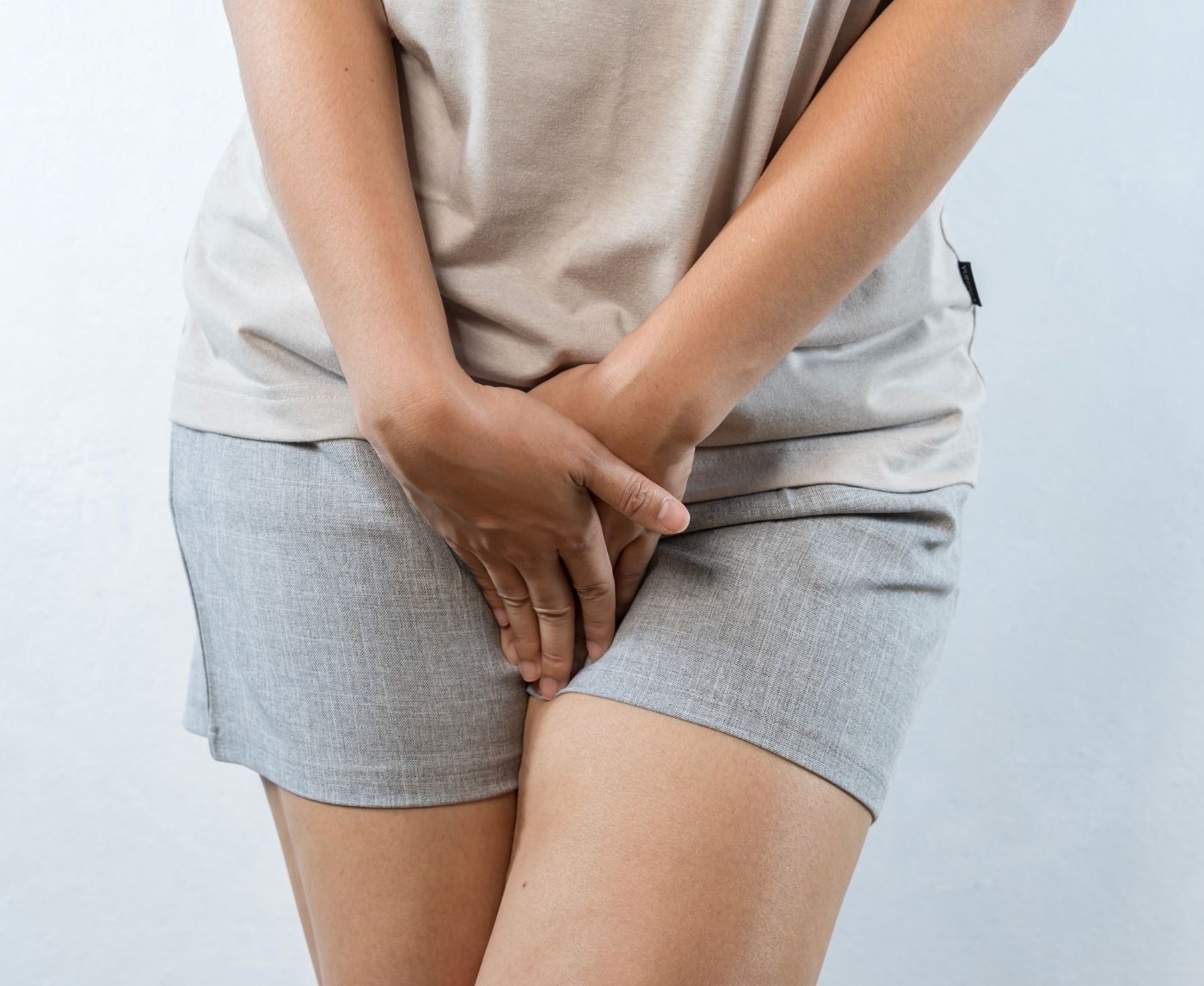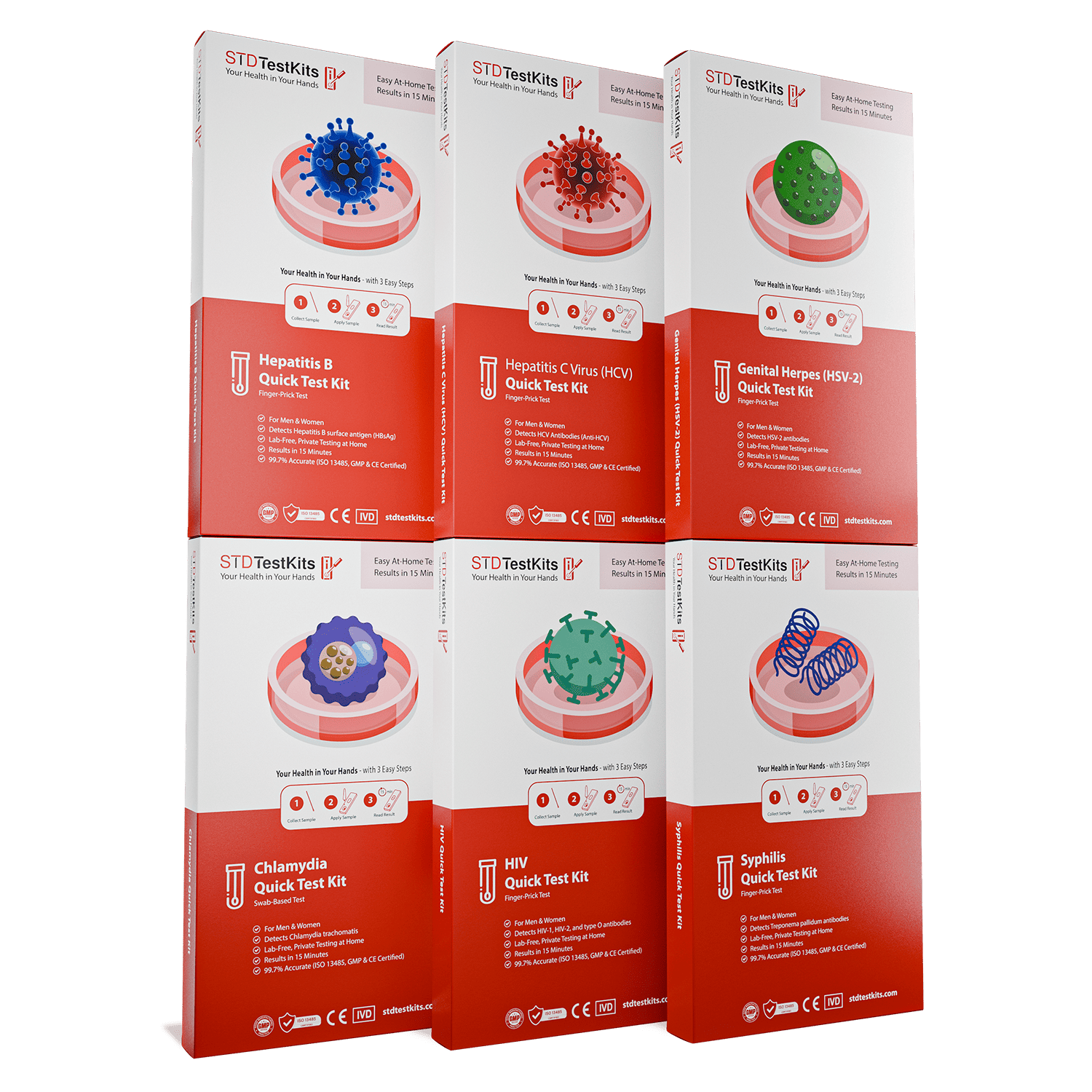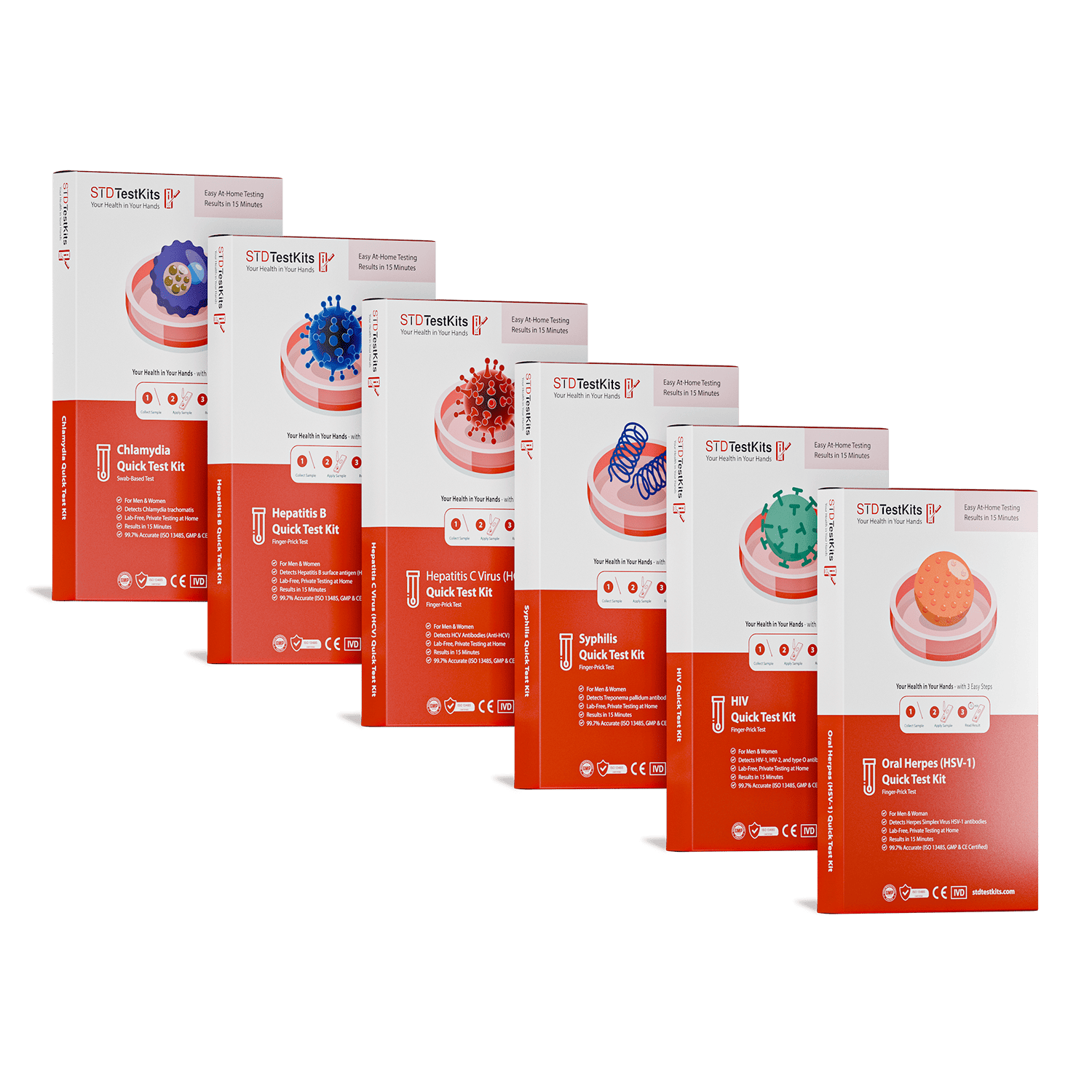Grindr Just Shipped Over a Million HIV Self-Test Kits, Here’s What That Means for You
Quick Answer: Trichomoniasis often mimics yeast infections or BV but requires different treatment. If symptoms keep coming back or don’t respond to standard meds, testing for trich is essential.
When the Symptoms Don’t Add Up
You know your body. When something feels off down there, it’s usually for a reason. The challenge is that many vaginal infections look and feel alike, especially to someone without a microscope or lab. Itching, burning, weird discharge, even that metallic or fishy smell can point to a handful of culprits. But treating the wrong one won’t help, and in some cases, can make things worse.
Jess’s story isn’t unusual. According to the CDC, up to 70% of people with trichomoniasis (commonly called “trich”) don’t have noticeable symptoms. When they do, it’s often mistaken for something else, especially yeast or bacterial vaginosis (BV). That’s because the symptoms can overlap:
Figure 1. Comparison of common vaginal infections. Symptoms overlap, but treatments differ. Misdiagnosis can prolong discomfort or allow STDs to spread.
The STD That Flies Under the Radar
Here’s the thing: trichomoniasis isn’t rare. It’s the most common curable STD in the U.S., affecting an estimated 2 to 3 million people annually, but it rarely gets talked about. One reason? It often presents with nothing but a vague sense that something’s “off.” Another? It’s not part of most routine STD panels unless you specifically ask for it.
Jess never thought she was at risk. She’d been in a monogamous relationship. She thought of STDs as something that came with clear signs, rashes, sores, or burning during urination. Trich doesn’t always show up that way. For many, the only symptom is a persistent itch or unusual discharge. Some people get abdominal pain or discomfort during sex. Others just feel “off” but can’t explain how.
“I wasn’t sleeping around. I wasn’t dirty. But somehow, I still had an STD,” Jess said. “That realization took a toll. But getting the right answer? It was a relief.”

People are also reading: The Forgotten STD: Why No One Talks About Donovanosis (Until It’s Too Late)
Why Treatment Keeps Failing
If you’ve treated a “yeast infection” multiple times and the symptoms bounce back like a bad ex, it’s time to consider that it might not be yeast at all. Here’s why:
Antifungal meds like fluconazole or Monistat only work on candida (yeast). They do nothing for bacteria (like in BV) or parasites (like in trichomoniasis). Worse, repeated antifungal use can irritate the vaginal lining or shift your flora in ways that make other infections more likely. You may even develop candida resistance, making future yeast infections harder to treat.
In Jess’s case, repeated antifungal use masked her symptoms just enough to delay proper diagnosis. “Each time I took the pill, I felt better for a few days. Then everything came back.” The cycle didn’t break until she got tested for STDs, including trich, with an at-home kit that included NAAT (nucleic acid amplification) testing.
Trich requires antibiotics, typically a single dose of metronidazole or a short course. It’s curable. But only if you know what you’re treating.
If this sounds familiar, multiple rounds of yeast treatments, persistent symptoms, maybe even an unhelpful doctor, here’s what you can do next:
Order a discreet combo STD test that includes trichomoniasis. At-home kits are accurate, private, and don’t require an awkward conversation. You can get results fast and take control of your next step.
Why Doctors Don’t Always Catch It
Let’s talk about the clinic gap. Even when you go in for STI testing, trich isn’t always included. Unless you’re pregnant or showing very specific symptoms, it might not even be mentioned. Some providers don’t use NAAT testing, which is the gold standard for trich. Others still rely on wet mount microscopy, which can miss more than half of trich cases.
Jess says she was never tested for trich until she ordered her own kit. “I went to two different clinics. They both said ‘probably yeast or BV’ and gave me meds. No one offered a trich test.”
This isn’t about blaming providers, it’s about empowering patients. If something feels wrong and standard treatments aren’t working, you have every right to ask for a deeper test. Or better yet, take matters into your own hands with an FDA-approved at-home option.
It’s your body. You know when something’s off. And you don’t need anyone’s permission to seek clarity.
What Testing at Home Actually Looks Like
There’s a lot of anxiety around STD testing, especially when it comes to privacy, timing, and what the results might mean. That’s why many people delay. But today’s home kits make testing for trich and other common STDs easier than ever.
Figure 2. Trichomoniasis testing methods. Accuracy and privacy vary. Not all clinic panels include trich, but many home kits do.
Jess used a combo test kit that covered chlamydia, gonorrhea, trich, and syphilis. Her result came back positive for trichomoniasis. “It sucked, but I was also relieved. At least now I knew what to do.”
She took the prescribed antibiotic, skipped sex for a week, and asked her partner to get treated too. Her symptoms cleared within days, and they haven’t returned since.
Want to skip the guessing game? This discreet at-home combo test checks for trich, chlamydia, and more with lab-grade accuracy.
How Trichomoniasis Spreads, Even Without Knowing
One of the most frustrating parts of trich? You can get it from someone who has no idea they’re infected. It spreads through genital contact, most often vaginal sex, and doesn't require ejaculation to pass. Because many people show no symptoms, they may unknowingly pass it to their partners. Even condoms aren’t a guarantee; while they lower the risk, they don’t eliminate it entirely.
Jess’s partner had no symptoms at all. “He felt fine. No burning, no discharge, nothing. He didn’t even believe he could have anything.” But when he tested, he came back positive too. Trich is one of those infections that thrives in silence, until someone notices a persistent irritation or recurring “yeast infection” that doesn’t quite fit.
Getting treated is essential not just for symptom relief, but to stop the back-and-forth cycle of reinfection. Both partners need to be treated, even if only one is symptomatic.
Left untreated, trich can cause complications like increased HIV risk and pregnancy issues. But the bigger problem for most is the emotional toll, months of guessing, failed treatments, and feeling like your body is broken.
Micro-Scene: The Day It Clicked
Jess remembers the exact moment she realized this wasn’t just another yeast infection. She was standing in the Target pharmacy aisle, staring at the same box of antifungal cream she’d bought three times before. The itch was back. The discharge was weirder than usual, thinner, more yellow-green than white. And her gut was screaming, this isn’t it.
“I just froze. I couldn’t go through the cycle again,” she says. “That’s when I googled, ‘what if it’s not a yeast infection?’ and saw something about trich. I didn’t even know what that was.”
That search led her to a trich-specific test, then a diagnosis, then finally a treatment that actually worked.
If you’re reading this while wondering the same thing, take this as your sign. It’s okay to question the story you’ve been given. Especially if your body keeps trying to tell you something different.
What About Shame and Stigma?
Let’s be real: there’s still a lot of shame around STDs. Especially for people who’ve been told they’re “low risk” or “clean” or monogamous. But infections don’t care about relationship status. They don’t care about gender, orientation, or how many people you’ve slept with. And they definitely don’t care about your feelings.
Jess says what hurt more than the itch was the assumption. That she’d done something wrong. “Even my doctor made me feel kind of gross, like I must’ve slept around. But I hadn’t. I just trusted someone who didn’t know they were carrying something.”
We need to stop treating STDs like a punishment and start treating them like what they are, common infections with straightforward solutions. And we need to give people tools to get tested without shame, expense, or awkward conversations.
That’s why at-home kits matter. They put the power back in your hands. You don’t have to beg a doctor to take you seriously. You don’t have to explain yourself to a receptionist. You just swab, send, and wait. Quietly. Privately. Confidently.
Testing Timeline: When to Test for Trich
Timing matters when it comes to trichomoniasis detection. If you test too early, within a couple days of exposure, you might not catch it. If you’ve been having symptoms for weeks, testing now will still help, but you’ll want to make sure it’s the right kind of test.
Figure 3. Trichomoniasis detection timeline. NAAT-based tests are most reliable from day 5 onward.
If it’s been more than a week since symptoms started, or since a risky sexual encounter, a test now can give you solid answers. And if you're still within the first few days, you may need to wait or plan a retest window.
Remember: STD Rapid Test Kits offers combo packages with clear instructions and fast shipping so you don’t have to delay.

People are also reading: Thought It Was Fatty Liver. It Was Hepatitis C.
After Treatment: What Comes Next?
Treating trich is usually straightforward: a single dose of antibiotics or a five-to-seven day course. But the emotional aftercare can take longer. It’s normal to feel embarrassed, angry, or betrayed, especially if you thought you were doing everything “right.”
Jess describes her recovery as more emotional than physical. “Physically I felt better in two days. But emotionally? It took longer. I had to unpack a lot of assumptions I had about who gets STDs.”
That’s why it’s essential to check in with yourself, and your partner, after treatment. Did you both get treated? Are you both symptom-free? Are you ready to have the “what did we learn from this?” conversation?
If you’re not sure, retesting in 3–4 weeks can confirm that the infection is fully gone. Re-exposure is common if a partner wasn’t treated at the same time.
One last tip: avoid sex (even with condoms) for at least 7 days after finishing antibiotics. It gives your body a chance to heal, and reduces the chance of passing the infection back and forth.
Need a test for your partner too? Send them a discreet trich kit to keep things simple and stigma-free.
Why This Story Matters (And Why Yours Does Too)
Jess’s journey isn’t rare. Thousands of people each year go through the same thing, treating symptoms over and over, wondering why nothing works, and assuming it must be something minor. But behind that itch or burn could be an infection that needs different care. One that’s curable, common, and massively underdiagnosed.
What’s powerful about Jess’s story isn’t just that she got better. It’s that she started asking better questions. She trusted her gut. She took control of her testing. She stopped letting shame make her decisions.
If you’re still stuck in that cycle, trying the same treatment for the same symptoms and getting nowhere, it might be time to pause, zoom out, and ask: What if this isn’t just a yeast infection?
Testing doesn’t have to be scary. It doesn’t have to be public. And it doesn’t mean anything about your worth, your hygiene, or your past. It just means you’re listening to your body. And that’s a pretty powerful thing.
FAQs
1. Could I really have trich if I thought it was just a yeast infection?
Totally. That’s actually one of the most common stories we hear. Trich likes to play dress-up as a yeast infection or BV, itchy, irritated, weird discharge, but regular treatments don’t touch it. If you’ve done the creams, the pills, even the yogurt-in-your-underwear routine and nothing’s working? Yeah. Time to test for trich.
2. What’s the actual difference between trich, yeast, and BV?
Think of it like three annoying roommates. Yeast is a fungus, BV is a bacterial imbalance, and trich is a parasitic STD. Their symptoms overlap, especially the discharge and itch, but their treatments are completely different. That’s why guessing wrong means you stay uncomfortable. Or worse, you spread it without knowing.
3. How did I get trich if I’ve only been with one person?
Monogamy isn’t a force field. Trich can hang out silently in someone’s body for months. If your partner had it before you got together, and didn’t know, they could pass it without a single symptom. This isn’t about blame; it’s about biology. Silent infections are sneaky, and trich is one of the sneakiest.
4. Can I really test for trich at home, or is that sketchy?
Not sketchy at all, actually kind of genius. At-home tests (like the ones from STD Rapid Test Kits) use lab-accurate tech to detect trich and other common STDs. No waiting rooms, no awkward vibes, just a swab and a few days for results. Way less drama than playing the “is this yeast or not?” game for the fifth month in a row.
5. Does trich always smell?
Not always, but when it does, it’s...noticeable. Some folks describe it as metallic, others say “musty” or “off.” But don’t wait around for a smell to appear, some people never get that symptom. If you’ve got discharge that’s new or different, especially greenish or frothy (yes, it can foam), it’s worth checking.
6. Is it possible my doctor missed this?
Unfortunately, yes. Many clinics don’t automatically test for trich unless you ask, and some still rely on microscope methods that miss half the cases. It’s not that your doctor doesn’t care, they might just not be thinking trich. You can always ask for NAAT testing, or skip the system and test yourself at home.
7. Will one round of antibiotics clear it up?
Usually, yes! Trich is one of the few STDs that’s curable with a single dose or short course of antibiotics like metronidazole. Just make sure both you and any recent partners get treated, otherwise, you risk passing it back and forth like a bad group chat.
8. Can I get trich from oral or fingers?
It’s rare, but not impossible. Trich prefers genital-genital contact, especially vaginal sex, but any fluid exchange near genitals can potentially transmit it. That’s why barrier methods like condoms or dental dams matter, and why testing is smart even if you think your sex life is “low risk.”
9. How soon after exposure can I test?
Give it at least 5 days, but closer to 7–10 is better. That gives the parasite time to show up in a sample. If you test too early and it’s negative but the symptoms continue, don’t panic, just retest. Better to double-check than keep wondering.
10. If I test positive, do I have to tell my partner?
Legally? That depends where you live. Ethically? Yeah. It’s awkward, but it’s also kind. Most people would rather know than unknowingly pass something on. Try this: “Hey, I found out I have something called trich, it’s treatable and super common. You should get tested just to be safe.” That’s it. No drama. No blame. Just real talk.
You Deserve Answers, Not Assumptions
If something feels off, you don’t need to wait for permission to figure it out. If you’ve treated a yeast infection more than once and things still aren’t right, don’t second guess yourself. Don’t assume it’s “just stress” or “just your pH.” And definitely don’t let shame keep you from getting tested.
Order a discreet at-home combo test kit. It checks for trichomoniasis and other common infections without judgment, appointments, or explanations. The sooner you know, the sooner you can treat, and the sooner you can feel like yourself again.
How We Sourced This Article: We combined current guidance from leading medical organizations with peer-reviewed research and lived-experience reporting to make this guide practical, compassionate, and accurate.
Sources
1. Planned Parenthood – What Is Trich?
3. Trichomoniasis – STI Treatment Guidelines (CDC)
4. Trichomoniasis – StatPearls / NCBI Bookshelf
5. Trichomoniasis (or “Trich”) – MedlinePlus
7. Trichomoniasis Treatment & Management – Medscape
About the Author
Dr. F. David, MD is a board-certified infectious disease specialist focused on STI prevention, diagnosis, and treatment. He blends clinical precision with a no-nonsense, sex-positive approach and is committed to expanding access for readers in both urban and off-grid settings.
Reviewed by: Celeste Howard, MSN, WHNP-BC | Last medically reviewed: November 2025
This article is for informational purposes and does not replace medical advice.







